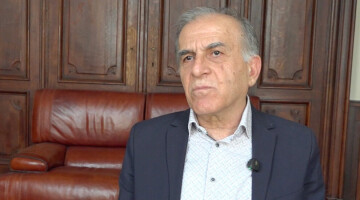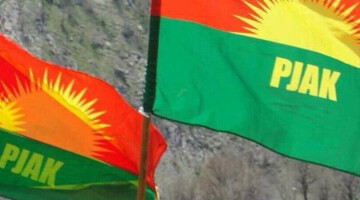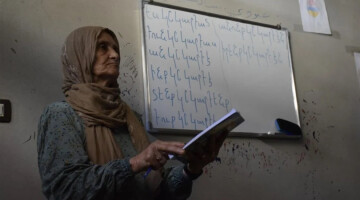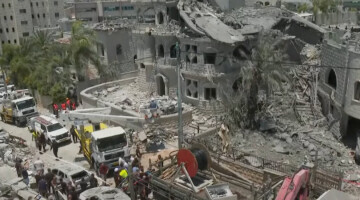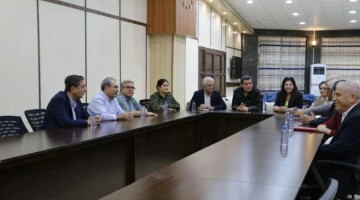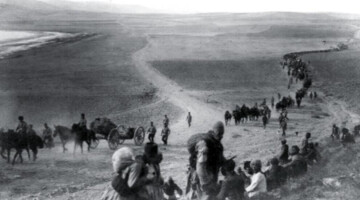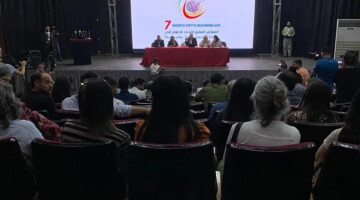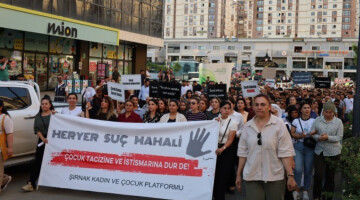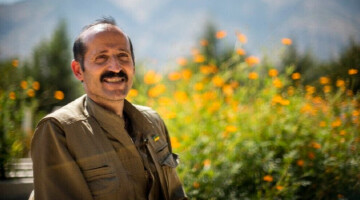After attacking Kobanê with a great force of arms during the month of June, ISIS gangs understood that it would not be possible to take the town by ordinary attacks and strategies in the face of the epic resistance that mainly intensified in the villages of Evdiko in the east, Kunheftarê in the south and Zor Mîxare in the west.
The gangs that fled the region in late July were also inflicted heavy losses during the "Kobanê Martyrs Revenge Operation" that lasted throughout the month of July.
The town which was relatively calm during the month of August faced as of mid September yet another attack of an unequal balance of power similar to the one between the Persian army and the 300 Spartans in history. ISIS gangs attacked the town with an abundant number of militants and arm force capable of occupying several big cities.
ISIS SEIZE A HUGE ARM FORCE FROM THE SYRIAN ARMY
Throughout the month of August, ISIS gangs conducted attacks on the bases of the Syrian army. The first attack in mid August targeted the regime's military headquarters which housed thousands of soldiers in the town of Ayn İsa. The assault which began at 20:00 in the evening ended up with the flight of the Syrian troops and seizure by ISIS of a large quantity of ammunition towards the midnight. Following Ayn İsa, gangs targeted the regime's military airport in Tabqa housing a remarkable amount of heavy weaponry which also they seized after taking control of the area in a few days. They seized at least 40 tanks from Tabqa. After Ayn İsa and Tabqa, gangs attacked Deir-e Zor and seized here as well a large quantity of ammunition belonging to the regime. During the course of the month of August, ISIS gangs gained weapons and munitions that the regime sort of presented to them and that would suffice to occupy dozens of towns.
WEAPONS DEPLOYED AROUND KOBANÊ IN LATE AUGUST
After dispatching the weapons seized from the regime to Kobanê in parts, ISIS gangs deployed all these weapons and the heavy weaponry they brought in from Iraq around Kobanê.
CLASHES WITH REGIME FORCES CEASE
As of the first week of September, all clashes with the Syrian army were ceased and ISIS mobilized all its forces in Syria towards Kobanê. After this date, regime forces conducted neither aerial nor ground operations against the gangs.
ARMS MOBILITY AT TURKEY BORDER
During the same days, villagers from Kobanê witnessed a delivery of arms to ISIS by the Turkish state over the Baghdad railway passing by the Kobanê border. Commanders of YPG/YPJ following the mobility in this process announced that ISIS was preparing for a major offensive greater than the previous one with the use of arms provided to them from Turkey's side in addition to the other three fronts. They were pointing to the role of the Turkish state in the attacks on Kobanê.
THE SITUATION IN KOBANÊ
Kobanê had been under siege and cut off from the outside world for two years now, as a result of which all needs were being met based on own sources. The canton administration was trying to produce a solution to the lack of food by initiating an agricultural move in the town where there no production was being made and trade had come to a halt. Power generators and water wells were being used to settle the problem of electricity and water both of which had been cut off by the gangs after the siege of the town. By August, water was being provided from the wells opened in the western part of the town, and electricity from the common power generators set up in every neighborhood.
BURKAN AL FIRAT ALLIANCE
Again during the same days, Kobanê still lacked the sufficient arm force and number of fighters to protect the town against attacks. Yet, fighters of the YPG/YPJ were ready to confront every attack with the spirit of self-sacrifice after inflicting a major blow on the ISIS gangs during the month of June and July with inadequate arms and a military force mainly consisting of new fighters that joined the resistance from across the town itself and Northern Kurdistan upon a call for mobilization.
In the first week of September, a military alliance was formed in Kobanê with progressive groups from the Free Syrian Army, such as Suwar Al Raqqa and Şemsî Şîmal. The military alliance was called Burkan Al Fırat which became the first one of its kind between Kurdish and Arab peoples in history. Soon after the declaration of the alliance, Burkan Al Fırat conducted a series of actions against the ISIS gangs. The most striking of these actions was the one conducted in the center of ISIS-occupied Jarablus city in the second week of September, which left a number of gang members dead.
MAJOR OFFENSIVE BEGINS
At the night of 14-15 September, ISIS launched the first attack, starting the battle which would witness a defense of values of humanity with an epic spirit of self-sacrifice and go down in history on the side of the Stalingrad defense and the resistance of Spartans against the Persians in Thermopylae ("The Hot Gates").
ISIS gangs started to attack the villages of Tahlik and Zerik in west Kobanê with missiles, mortars and a number of tanks. As YPG/YPJ commanders moved for this area, reports came through that gangs had also started to attack the villages of Serzori, Qizeli, Huriye, Leqleqo and Qorike on the eastern front to the accompaniment of at least eight tanks. On 15 September morning, ISIS launched an attack on the southern front as well. Differently from the previous simultaneous attacks from all three fronts, ISIS gangs now deployed arms and militants on the southeastern and southwestern parts too, and started an offensive from five fronts.
'WE ARE GOING TO WIN THIS WAR'
It didn't take long to see the dimension of this offensive. YPG/YPJ commanders were now understanding that this was not an ordinary attack and occupation move and witnessed a technical and numeral inequality at an awesome level. As ISIS gangs launched this offensive with all their forces and weapons in Syria, it became clear that their aim was to ensure an entire occupation of Kobanê in a short time. YPJ Commander Meryem Kobane was making this fastening; "This will not be an ordinary battle but a confrontation between the male-dominant sovereign savagery and the spiritual power and will of democratic modernity. We are going to win this war."

